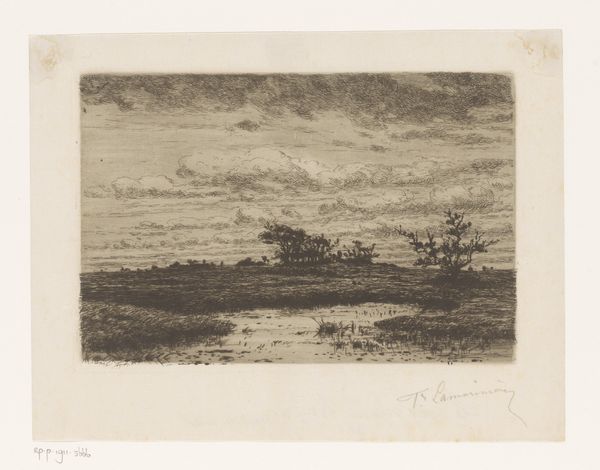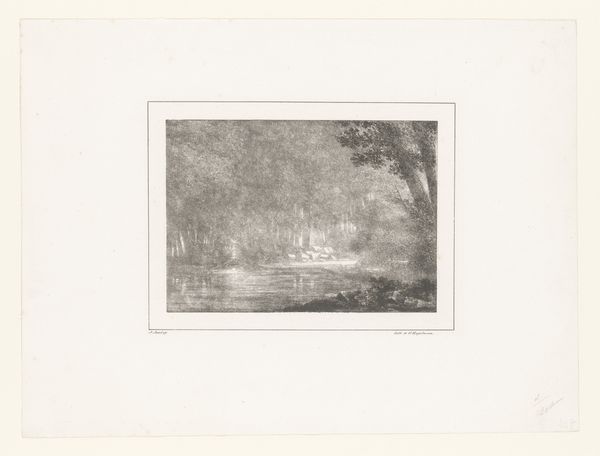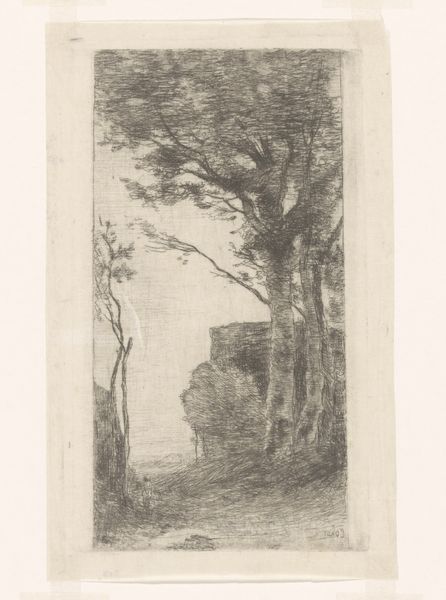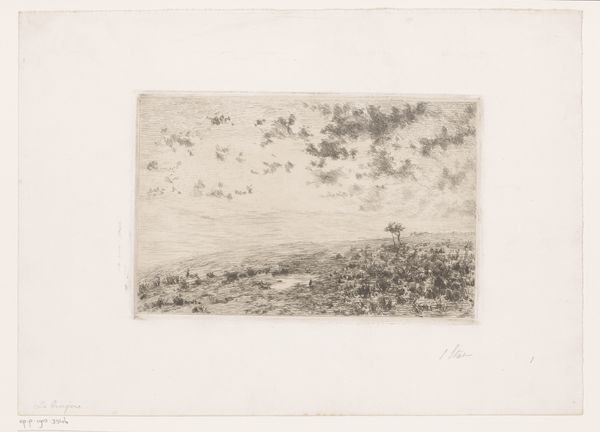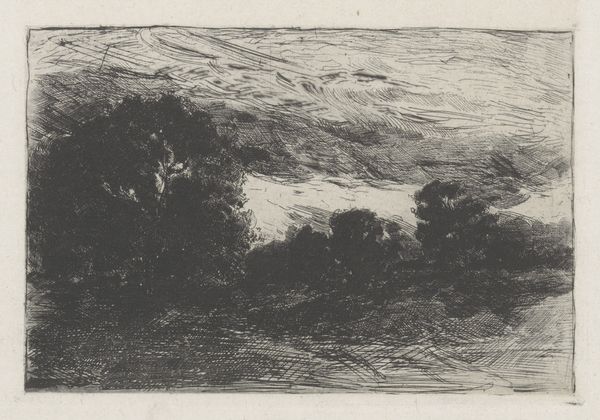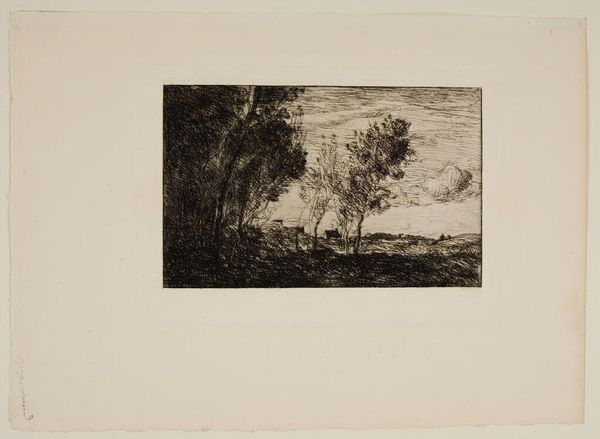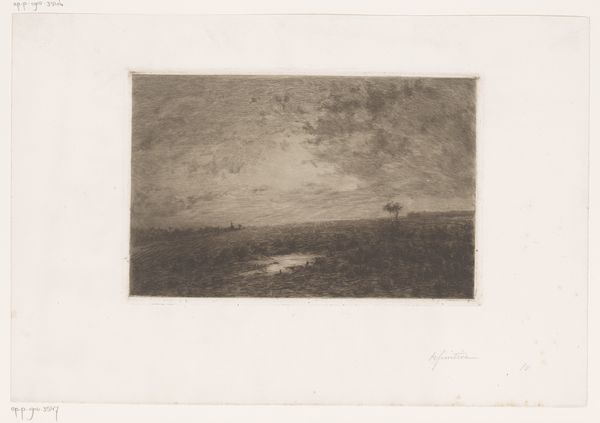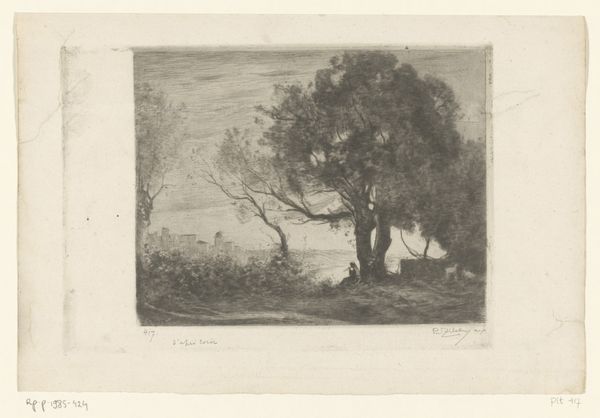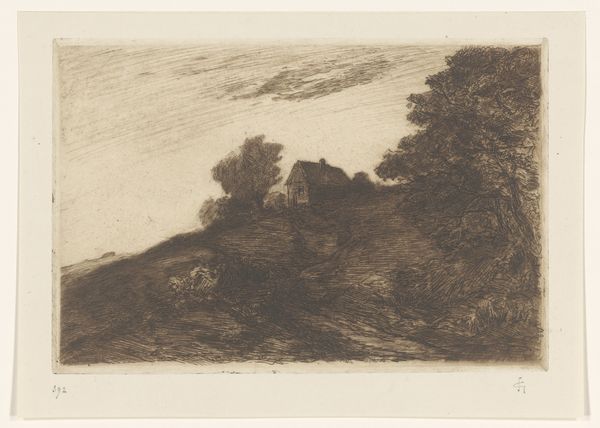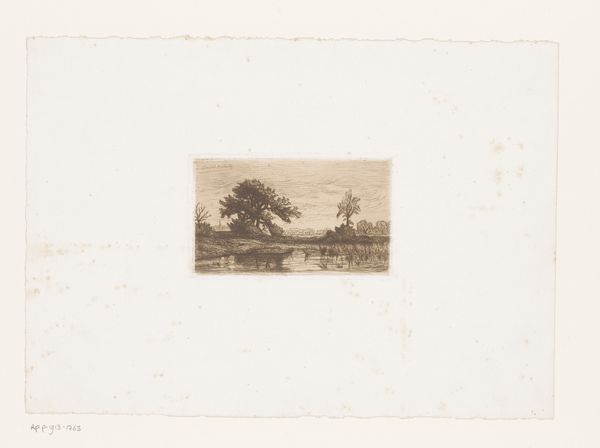
Dimensions: height 159 mm, width 229 mm
Copyright: Rijks Museum: Open Domain
Curator: Welcome. We are standing before Philip Zilcken's "Landscape with Calf in the Water and Man Under a Tree." Created sometime between 1890 and 1930, this artwork at the Rijksmuseum utilizes etching techniques to create a serene scene. Editor: It’s wonderfully subdued. The monochromatic palette evokes a sort of melancholy, or perhaps quiet contemplation. The overall tonality and loose mark-making really captures the feeling of dusk or dawn in a rural setting. Curator: The composition is masterfully constructed. Notice the strategic placement of the tree on the left, balancing the lone figure with the calf wading in the water on the right. The horizon line, although faintly rendered, divides the space in a calculated manner. Zilcken used the texture of etching to produce atmospheric depth. Editor: I appreciate the intentionality with which Zilcken places these figures—the anonymous man and the calf—within the larger landscape. This brings forward critical questions about labor, agrarian life, and our complex relationship with nature, especially when considering rapid industrial changes that swept the Netherlands during this period. Is it meant as a subtle commentary on the changing Dutch landscape? Curator: Perhaps, but focusing solely on representation neglects the purely visual experience. The rough texture achieved via the etching process enhances the tangible and somewhat primitive qualities of the image itself. Look at how the etched lines create an interplay of light and shadow that define the forms, particularly the foliage of the prominent tree. It is this delicate dance between intention and process that defines the work. Editor: Yes, the mark-making does give a sense of spontaneity to what otherwise seems a traditionally structured composition. Even if we foreground formal choices, though, that artistic intentionality still speaks to the human condition – how we, as a species, have always found ourselves negotiating, contesting, and ultimately shaping our environment, a dynamic relationship we should always keep in sight when engaging with landscape art. Curator: I think there’s value in observing the details of its technical qualities as a visual and material experience. Ultimately, both the artist’s deliberate placement of form and contextual narratives offer the viewer unique paths of engagement. Editor: A fitting conclusion. It showcases how art invites multiple interpretations, all contributing to a deeper engagement. Thank you.
Comments
No comments
Be the first to comment and join the conversation on the ultimate creative platform.

